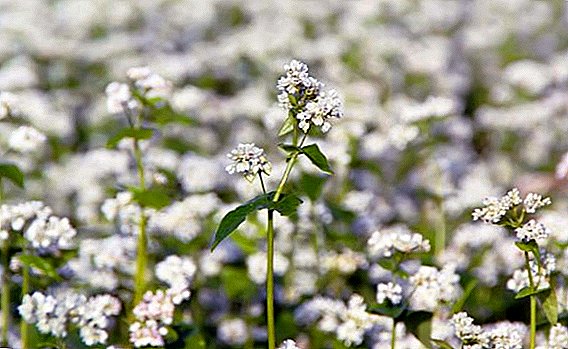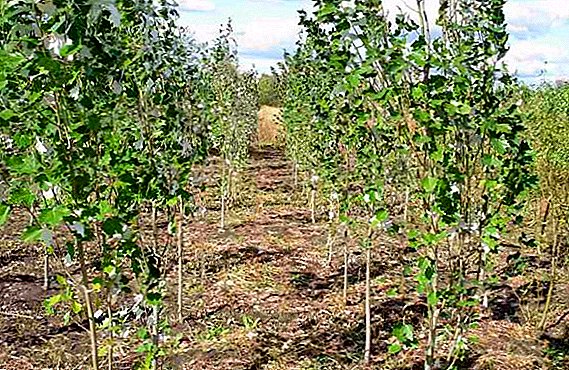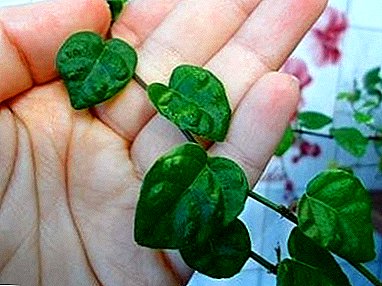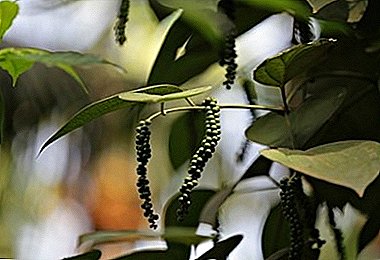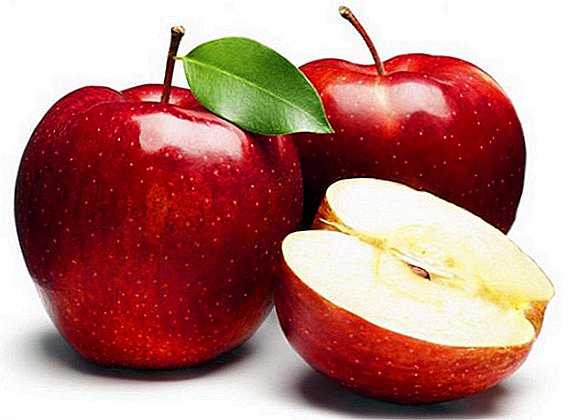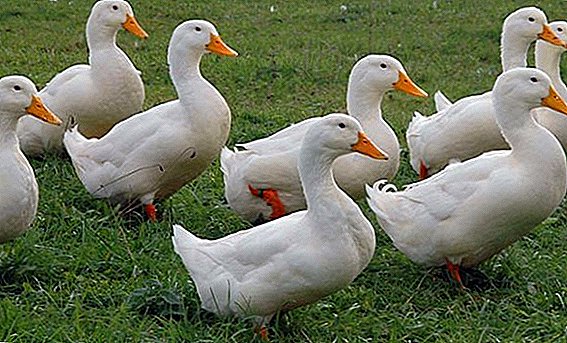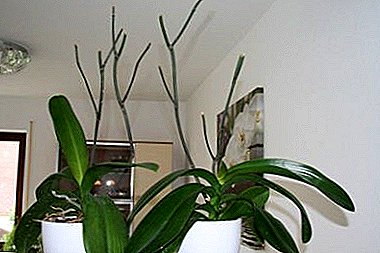
Orchid is one of the fascinating and beautiful plants that pleases the eye. But having made the decision to plant this plant at home, a beginner florist raises many questions about the cultivation and care of this exotic flower. For example, how often do you need to replant an orchid, can it be done when it has released an arrow and at what time is it better to change the ground and the pot?
Why is it better to wait for a rest period?
It is better to plant the plant after flowering, when there is a period of rest, so as not to cause harm to this magnificent plant. Orchid needs to be replanted no more than once every 2-3 years. It should be understood that the transplant causes any plant stress, and the more tender orchids.
As for the kids, then it is better to deposit them in late autumn or winter.
Terms of transplantation directly depend on the belonging of an orchid to a particular variety. - but spring is practically the best time of year for everyone. For example, there are plant species, such as cattleya, oncidium and dendrobium, which need to be transplanted only when the first layer appears, but before the baby takes root. And monopodial orchids are transplanted as soon as the tips of the roots become bright green.
There are many reasons for late orchid transplants after flowering, but nevertheless making such a decision, you need to think carefully.
When can a plant change soil?
 As mentioned earlier, that after flowering, the flower is transplanted in spring. But how to determine a beginner that the orchid is time to change the soil? There is a theory that a plant should not be touched for 2 years, and only after that it is ready for transplantation. But you should not believe standards unconditionally, since they are not the same for different types. There are practical examples by which you can accurately determine the transplant time:
As mentioned earlier, that after flowering, the flower is transplanted in spring. But how to determine a beginner that the orchid is time to change the soil? There is a theory that a plant should not be touched for 2 years, and only after that it is ready for transplantation. But you should not believe standards unconditionally, since they are not the same for different types. There are practical examples by which you can accurately determine the transplant time:
- powerful root system, with which the old pot has become cramped;
- a large number of air roots are formed;
- leaves began to become pale green or yellow spots;
- the orchid does not release flower stalks for more than three months since the last flowering;
- the volume of green mass is several times larger than the size of the pot.
But there are parameters that force the grower to transplant ahead of time.
Why may need to change to another pot?
Urgent transplant may be needed in the following cases.:
- rotting of the lower leaves and roots;
- the appearance of pests on the plant;
- lean and excessively dry substrate;
- pallor of leaves, stunted, bare roots;
- shakiness of a plant.
Attention! Water with a high content of heavy impurities and iron can enhance the process of rotting of the substrate.
If the plant feels good in the old pot, then it is unnecessary to touch it.. But if the roots turned black, mold appeared on the outlet or microorganisms started, then the flower is in great danger.
What rooting method to choose?
There are two common ways of planting orchids: on snag or in flowerpots. The method of transplantation in this case is chosen based on your conditions, but sometimes it is dictated by the type of orchid.
On snag
 This is a fairly common method of planting orchids. Instead of snags, you can use a piece of pine barkOnly fresh and without resinous discharge. In addition, you can use:
This is a fairly common method of planting orchids. Instead of snags, you can use a piece of pine barkOnly fresh and without resinous discharge. In addition, you can use:
- cork oak;
- tree fern.
The size of the snags is chosen based on the type and growth characteristics of the orchid. There are some plants in which, shoots are formed at a great distance, and they can very quickly spread around a not large beam. Therefore, in order not to cause another injury to the plant, take care of a large piece of bark.
The peculiarity of this type of planting is the fact that after watering the roots dry out quickly, but it is worth noting that in the natural conditions of the tropics this happens. After a shower, the roots dry out in a matter of minutes, and the plant receives a large amount of air, while almost no rotting occurs.
But it should be understood that the plant on the coarse will have to be placed in an improvised greenhouse so that the roots do not experience a strong lack of moisture. And during the rest period, it will be necessary to water the orchid very rarely.
To substrate
The orchid is an epiphyte, and the pot for it is a support, not a container for the earth.
- For planting suitable pot of any material. Only you need to take into account that for some types of exotic beauty you need to use transparent pots. Do not use porous clay pots, as they quickly evaporate moisture.
- The planter should be wide, but not high, since the root system is superficial and grows in breadth.
- There should be a lot of holes in the dishes, not only in the bottom, but also in the walls; this is necessary not only to drain excess liquid, but also for aeration.
- The top of the planter must be wider than the bottom, otherwise it will be very difficult to pull out the plant during transplantation.
Step-by-step instructions on how to transplant an orchid after flowering: To transplant a plant, you need to prepare a pruner, or sharp scissors, ashes for powder cuts.
Pot and soil preparation
 In order for your exotic beauty to develop well, you need to choose the right pot.. At the bottom of the pot should be holes - the stagnation of moisture is very detrimental effect on the plant. The pot should be slightly larger than the previous one, but not with a reserve - there are reasons for this:
In order for your exotic beauty to develop well, you need to choose the right pot.. At the bottom of the pot should be holes - the stagnation of moisture is very detrimental effect on the plant. The pot should be slightly larger than the previous one, but not with a reserve - there are reasons for this:
- the orchid will not bloom for a long time, as it will increase the green mass;
- at the bottom of the pot can stagnate moisture.
If you decide to buy a ceramic pot, then you should opt only on the glazed inner surface, otherwise the orchid's roots will stick to the walls, and separate them out without damaging you.
Trimming and separating babies
If an orchid shoots an arrow and has faded, is it possible to cut it during transplantation, and what to do with the arrow further?
If the plant has kids ready for transplanting, they should be very carefully removed from the mother plant.. Some novice growers make a big mistake when separating the baby from the flower spike - it is strictly prohibited, the process will not survive. It is necessary to separate only with a peduncle 2 centimeters from the growth point on both sides.
- Sections must be treated with ashes, both on the mother plant and on the baby.
- Then leave the baby for half an hour to dry.
- Carefully place the young plant in the ground, you can take an ordinary plastic cup as a container.
- After the drainage has been laid on the bottom of the cup, the roots are injected there - you need to act with extreme caution.
- Spread the roots in a glass and gently fill the substrate.
- It is important that the growth point is at the level of the edges of the tank. Soil can not be compacted, just knock on the edges of the cup several times and it will settle.
- Watering the plant does not need 2-3 days.
If the baby is a root process, then without proper experience it is almost impossible to separate it from the mother, without risk to the latter.
We offer to see a visual video about the separation of children from orchids:
Extracting plants
 Before removing the faded plant from the old pot, the substrate is abundantly moistened. Carefully turn over the pots, holding the orchid near the outlet, and tap on the walls of the container, trying to remove the roots along with a clod of earth.
Before removing the faded plant from the old pot, the substrate is abundantly moistened. Carefully turn over the pots, holding the orchid near the outlet, and tap on the walls of the container, trying to remove the roots along with a clod of earth.
If the pot is ceramic, it will have to be carefully broken with a hammer. If some fragments stuck to the roots, they do not need to be separated - plant with them.
Washing the roots and drying
Before you clear the roots of the old substrate, you should release a lump with roots for half an hour in warm water. Remove the soil, and wash the roots in running water. After inspection, the orchid is left in the air for 7 hours, in order for the roots to dry.
Accommodation in a new flowerpot
- lay drainage on the bottom of the pot, one third;
- sprinkle one handful of substrate;
- take the support stick and carefully fasten the roots of the plant around it;
- drop the roots in the pot;
- fill in the missing substrate, knock on the sides of the pot, so he settled.
First watering
Immediately water the plant is not necessary, the first watering is carried out on day 4 after transplantation.
Problems and difficulties
If everything is done correctly, then there will be no difficulties. If the plant is infected with parasites, then it will have to be treated, dropping the roots for 15 minutes in a special solution. Same during transplantation, root decay may be found, which will have to be removed. If, after transplantation, to put a flower on the window sill, then it can get sick, the light should be diffused.
Conclusion
Orchid transplantation after flowering process is not complicated, and the plant will soon be pleased with new flower stalks.


